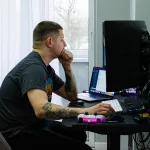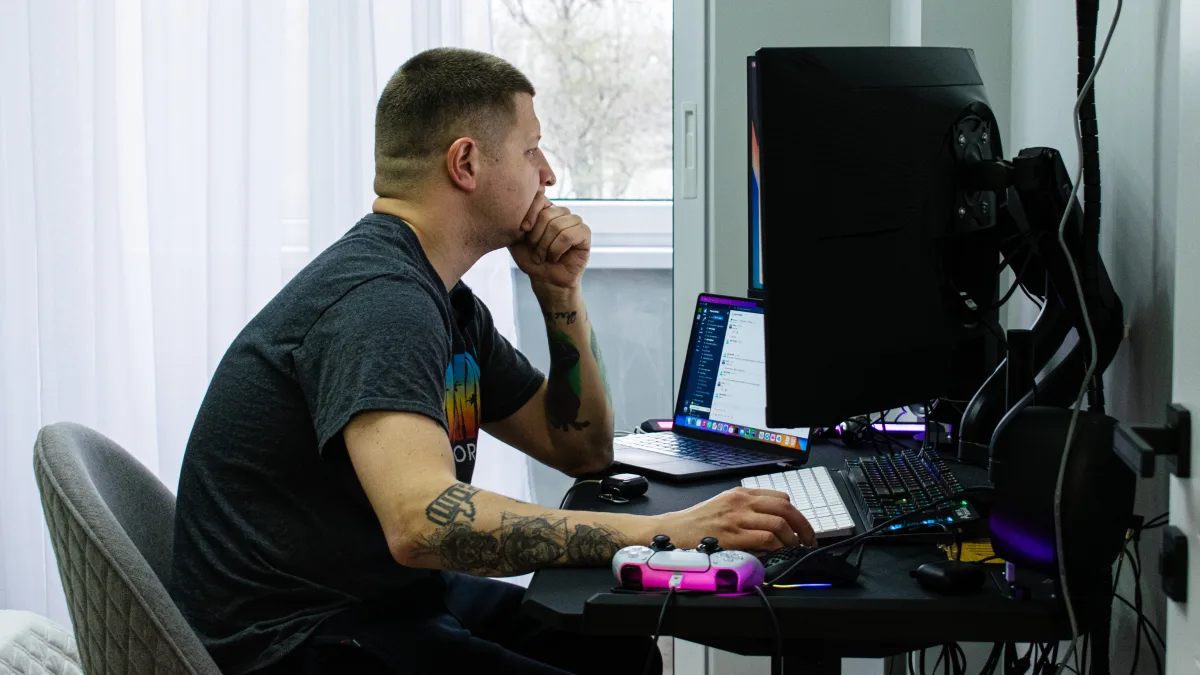The promise was elegant in its simplicity. Give poor people small loans. They start businesses. Businesses generate income. Income lifts families from poverty. Repeat at scale. Muhammad Yunus won a Nobel Prize for this logic. Microfinance institutions spread across continents. Development agencies poured billions into programmes premised on one assumption: capital scarcity was the binding constraint on entrepreneurship.
Except it wasn’t. Fifteen years of randomised controlled trials reveal uncomfortable truths. Borrowers repay loans but businesses fail. The problem wasn’t access to credit. It was everything else: skills, markets, networks, viable business models. Money turns out to be necessary but spectacularly insufficient.
So microfinance is reinventing itself. Institutions now offer business development services alongside loans—training in financial management, marketing workshops, mentorship programmes, digital platforms connecting borrowers to customers. The pivot sounds sensible. If credit alone doesn’t work, add what’s missing. But this reinvention raises its own awkward questions. If entrepreneurs need this much support to survive, should they be entrepreneurs at all? And can microfinance institutions afford to provide it?
What capital can’t buy
The original microfinance model worked brilliantly in specific contexts. Rural Bangladesh, 1970s. Skilled artisans lacked capital to buy materials. Women weavers couldn’t afford looms. Small loans removed the constraint. Skills existed. Markets existed. Demand existed. Capital was genuinely the missing piece.
Transport that model to competitive urban economies and it collapses. A small loan lets you open a shop. Fine. But urban markets already have shops—established ones with supplier relationships, customer bases, and economies of scale. New entrants compete in saturated, low-margin sectors. Retail, food service, basic services. The sectors where barriers to entry are low precisely because returns are terrible.
Being good at cooking doesn’t make you good at running a restaurant. Understanding this distinction matters. Technical skills—the ability to prepare food, sew clothes, repair bicycles—represent only one input into business success. The others? Customer acquisition. Inventory management. Cash flow forecasting. Competitive positioning. Regulatory compliance. Most microfinance borrowers possess technical skills but lack commercial acumen.
Here’s where it gets uncomfortable. Studies show training works best for borrowers who already have entrepreneurial ideas or higher baseline skills. Those likeliest to benefit from business development support are those least likely to need microfinance in the first place. The borrowers who most need comprehensive support are precisely those least equipped to leverage it effectively. Selection effects working backwards.
The reinvention playbook
Microfinance institutions aren’t stupid. They see the evidence. So they’re adding services beyond credit. The approaches vary but share common elements.
Business training programmes teach financial literacy, record-keeping, marketing basics. The theory makes sense. One Peruvian study found training improved client retention by four percentage points and marginally improved loan repayment. But effects on actual business performance? Negligible. Profits didn’t increase. Employment didn’t expand. Borrowers learned to manage downturns better—not nothing, but hardly transformative.
Interestingly, simple rule-of-thumb training outperforms complex formal business education. Teaching basic practices—separate business and household finances, maintain simple records, understand markup—delivers more impact than comprehensive curricula covering strategic planning and competitive analysis. This tells you something about who you’re teaching.
Mentorship schemes pair borrowers with successful entrepreneurs. The hope? Experienced business owners transfer tacit knowledge that formal training can’t capture. How to handle difficult customers. When to extend credit. Which suppliers to trust.
But there’s a twist. Research in Uganda found wellbeing mentorship—guidance on health, sanitation, family relations—reduced loan defaults more effectively than business training. When choosing between teaching business skills and addressing the survival uncertainties preventing people from focusing on business, addressing survival won. That says something about what constraints actually bind.
Sector-specific support represents the most promising pivot. Rather than generic small business loans, programmes target specific value chains—agricultural cooperatives, craft exporters, service providers in identified gaps. The logic: if you’re solving a coordination problem or providing genuine market access, credit becomes useful input rather than false hope.
But notice what this requires. Deep sector knowledge. Established market linkages. Ongoing technical support. You’re not running a lean lending operation anymore. You’re running an industry development programme that happens to include finance.
Digital platforms connecting microenterprises with customers sound modern and scalable. Reality proves messier. Most microfinance borrowers operate in sectors where digital platforms add limited value. Your neighbourhood vegetable seller doesn’t need an app. The local tailor gets customers through foot traffic and word-of-mouth. Digital tools help businesses that should scale, not marginal enterprises serving immediate neighbourhoods.
The economics don’t work
Here’s the problem undermining reinvention: comprehensive business development support is expensive. The original microfinance model achieved scale through lean operations. Small loans, group lending for social collateral, minimal overhead. Interest rates covered costs and generated modest returns. Institutional sustainability was feasible.
Add business training, mentorship programmes, sector-specific technical assistance, and the cost structure explodes. One study calculated that extending training throughout an institution cost 43,000 US dollars—and that’s just for basic financial literacy, not comprehensive business development services. Staff time, materials, monitoring, evaluation. It adds up.
Microfinance institutions face an institutional logic tension. They want to offer comprehensive support because evidence shows credit alone doesn’t work. But offering comprehensive support threatens financial sustainability. The very institutions meant to demonstrate market-based approaches to development end up requiring ongoing subsidies to function.
Some respond by charging higher interest rates. But microfinance already faces criticism for rates reaching 30-40 per cent annually. Raising them further to fund business development services prices out the very borrowers most needing support. Others rely on donor funding to cross-subsidise services. Which works until donors decide microfinance is yesterday’s development fashion.
The uncomfortable alternative? Accept that most people make better employees than entrepreneurs. Focus support on the small subset with genuine commercial aptitude rather than maintaining the fiction that anyone can start a successful business if only they had training and a loan.
Should they be entrepreneurs at all?
This is the question the sector avoids asking. If someone needs extensive business training, ongoing mentorship, market linkages provided by external organisations, and continued technical support—all subsidised by donors or high interest rates paid by more successful borrowers—perhaps entrepreneurship isn’t their optimal path.
The opportunity cost matters. Time spent in struggling businesses is time not spent in wage employment, skills training for better jobs, or education enabling upward mobility. The assumption that self-employment represents empowerment looks shakier when the alternative is stable employment at higher income.
Most successful entrepreneurs don’t emerge from microfinance programmes. They start businesses because they identified opportunities, possessed relevant skills, had access to capital through savings or networks, and could navigate regulatory requirements. Microfinance clients are those excluded from this process—often for reasons credit alone can’t address.
The pivot to business development services reveals this uncomfortable reality. If borrowers need this much support, you’re not removing constraints preventing natural entrepreneurs from flourishing. You’re trying to manufacture entrepreneurs from people whose comparative advantage lies elsewhere. That’s not liberation. It’s expensive misallocation.
What might actually work
Honest appraisal suggests two paths forward, neither resembling traditional microfinance.
First, accept that effective business support requires resources incompatible with financial sustainability at small loan sizes. Convert microfinance into what it actually is: development programmes using credit as one tool among many. Stop pretending it’s a market-based solution. Acknowledge donor dependency. Focus on the small percentage of borrowers showing genuine commercial aptitude rather than spreading thin support across everyone.
Some organisations are moving this direction. Sector-specific programmes working with agricultural cooperatives or craft exporters that provide comprehensive supply chain integration, market access, and technical support alongside credit. These work. They also look nothing like the lean lending model that made microfinance scale.
Second, redirect resources toward proven interventions. Vocational training linked to labour market demand. Support for labour mobility to higher-wage jobs. Education enabling skill development. Infrastructure reducing transaction costs for legitimate businesses. Regulatory reform lowering barriers to formal sector participation.
These lack the appealing narrative of ’empowering entrepreneurs’. They don’t generate heartwarming testimonials about women lifting families from poverty through their small businesses. But they might actually increase incomes more effectively than subsidising marginal enterprises in saturated markets.
The reinvention
Can microfinance reinvent itself? Yes, by admitting it was never about credit in the first place. The successful cases always involved borrowers who had skills, identified market opportunities, and could leverage loans productively. Credit removed one constraint among many already overcome.
Offering business development services alongside loans doesn’t fix the fundamental problem. Most microfinance borrowers lack viable business models in competitive markets. No amount of training in cash flow management addresses this. You can teach someone to keep better records. You can’t teach them to succeed in a saturated market against established competitors with scale advantages.
The uncomfortable truth microfinance institutions avoid stating: entrepreneurship is hard. Most people lack the skills, temperament, or circumstances to build successful businesses. Democratising access to credit doesn’t democratise commercial success. It democratises debt and disappointment.
The reinvention underway—adding services, providing mentorship, creating sector-specific programmes—represents institutions grappling with evidence that their original theory didn’t work as advertised. Credit alone isn’t sufficient. But comprehensive support breaks the cost structure. And if borrowers need that much support to survive, maybe they shouldn’t be entrepreneurs at all.
That’s not the message development agencies want to hear. It lacks the romance of Grameen Bank’s inspiring narrative. But thirty years of experience suggests it’s time for uncomfortable honesty: not everyone can or should be an entrepreneur, and access to capital doesn’t change this reality. Sometimes the best intervention is helping people find good jobs rather than subsidising bad businesses.
Photo: Dreamstime.







